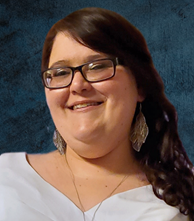Providing high-quality healthcare to patients who are Deaf or hard-of-hearing (DHOH) requires your staff to communicate effectively. Beyond providing federally mandated interpretation services, your staff should understand the nuances of DHOH culture and learn how to avoid rude or inappropriate behavior. Use these “dos and don’ts” to help your team deliver superior care to your DHOH patients:
What you should do while working with DHOH patients
DO: Speak directly with your patient
People often have the urge to speak to the person who understands them (the interpreter) rather than the person they ultimately need to communicate with. For example, someone may ask the interpreter, “Can you please ask Mr. Bakshi what other symptoms he’s experiencing?” instead of simply asking the patient himself. This type of interaction can make your patient feel confused or ignored. For best results, your staff should speak directly to the patient in the first person.
DO: Consider how you’re communicating through body language and eye contact
Sign language uses facial expression and body movement as a grammar component, making it crucial to consider both verbal and physical communication. For example, sharing positive news with a solemn expression can be confusing until the interpreter clarifies the message.
Another way to improve communication with DHOH patients is to maintain eye contact. Healthcare providers should look their deaf patients in the eye when conversing, while understanding that the patient will need to watch the interpreter to understand their signing. Prolonged eye contact shows the DHOH person you’re engaged in the conversation.
What not to do while working with DHOH patients
DON’T: Assume your patient understands ASL
There isn’t one sign language spoken universally around the world. American Sign Language (ASL) is most common in the US, but your patient may be more familiar with a different form of sign language.
“Every country has a different sign language, and I find their cultures and how the languages work are connected to and rely on the local spoken language. There are many dialects within sign languages too – I take calls from the east coast, and I learn new signs all the time that are unique to that region.” – Melanie Whitt-Trevino, a certified CyraCom ASL interpreter
DHOH patients may use alternate communication methods, such as Signed English, the Rochester Method, or home signs. Qualified, professional ASL interpreters should be able to quickly determine whether your DHOH patient is proficient in ASL.
DON’T: Increase your volume or exaggerate your speech
With an ASL interpreter ready to help you communicate, there’s no need to speak differently to your DHOH patients. Avoid slowing your speech, over-emphasizing words, or speaking louder in an attempt to get your point across. Exaggerating your speech may confuse those who rely on lip-reading, or you may unintentionally insult your patient.
Additional DHOH & ASL resources
Tips for working with DHOH clients/patients:
- DHOH 101: Things to know when working with the Deaf & Hard of Hearing Community
- Different Ways to Communicate with the Deaf and Hard of Hearing
- Written Communications for the Deaf and Hard of Hearing
- Rights and laws for the Deaf and Hard of Hearing community
- Deaf/HOH during the Pandemic: Challenges for Accessing Healthcare
Tips for working with interpreters:
Need help accessing ASL or spoken language interpreters?
Contact our team at getstarted@cyracom.com today to ask questions or set up a zero-risk consultation.










